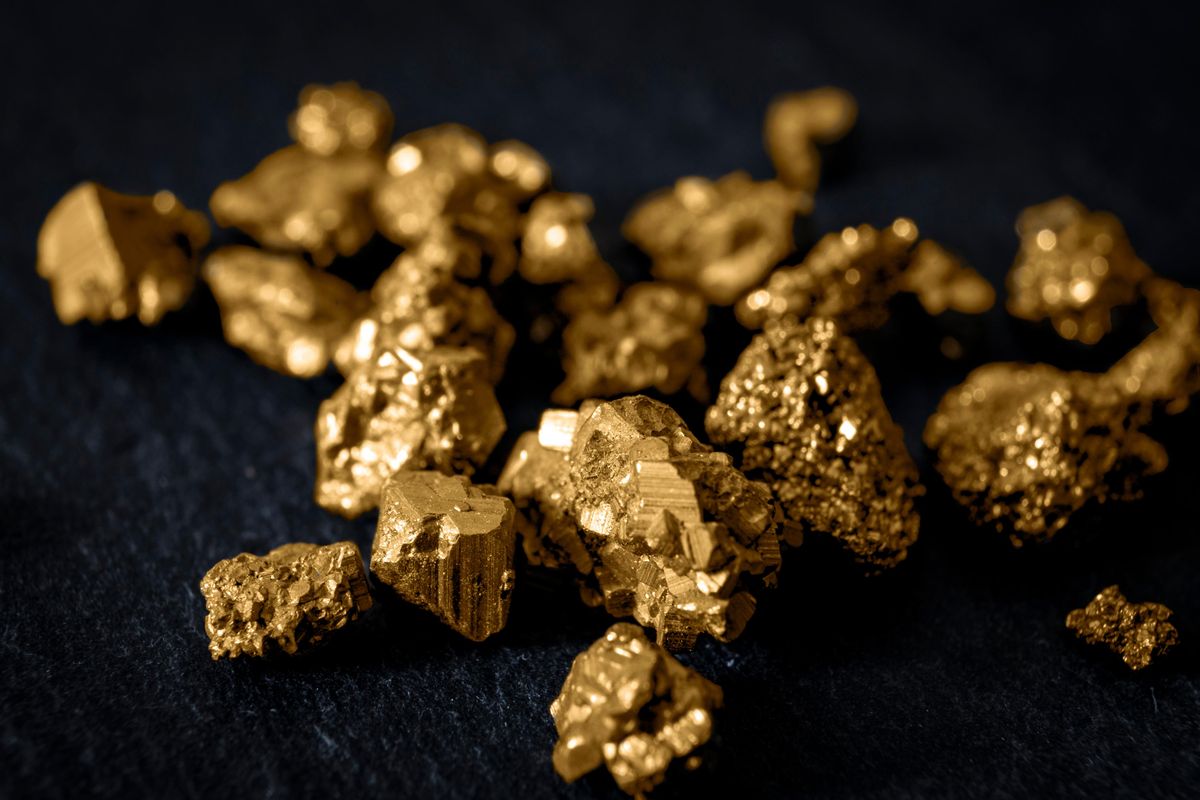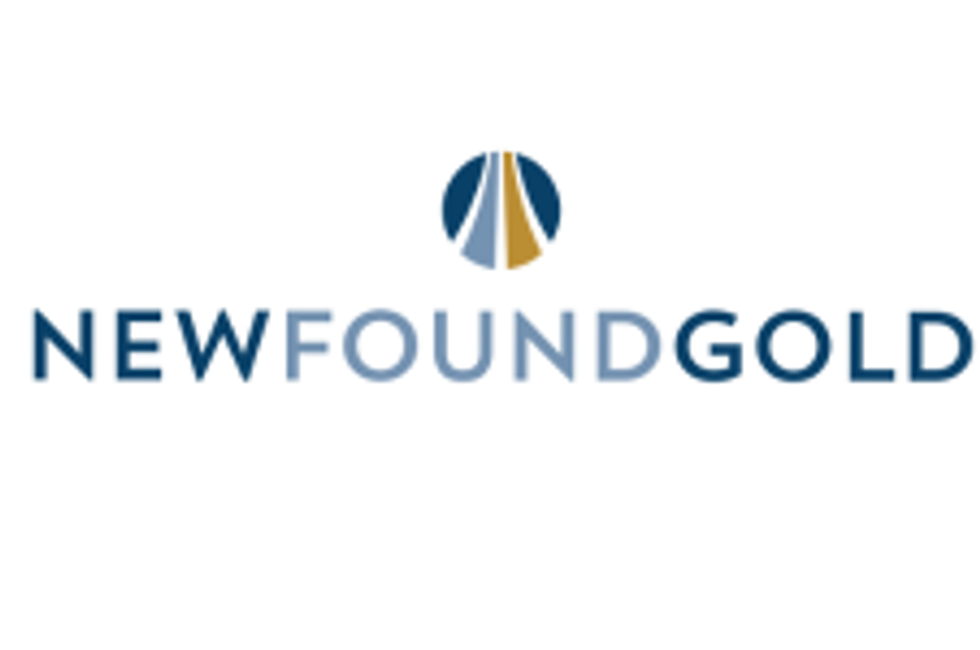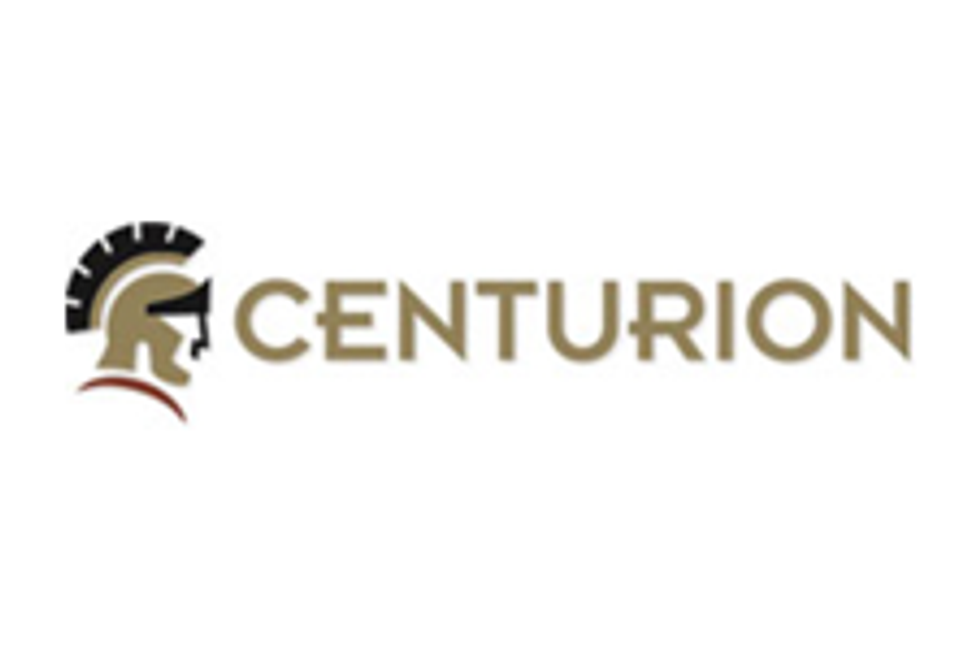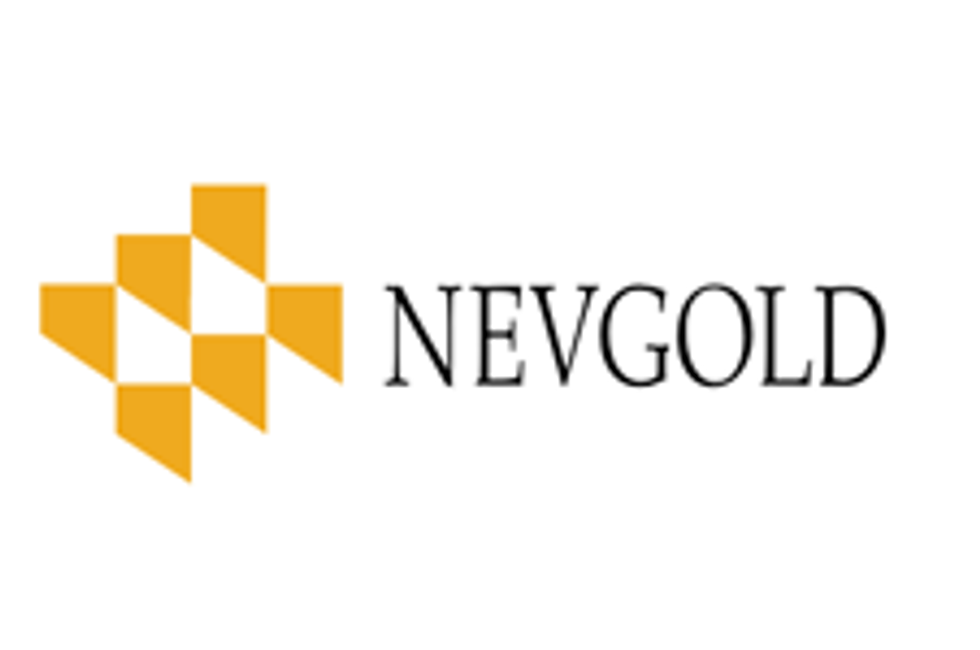Top 10 Biggest Gold Mines in Australia
Here's a look at the top 10 Australian gold mines with the highest production, including Boddington, Cadia Valley, KCGM and Tropicana.

Australia is currently tied with Russia for second place in global gold production.
With gold's price trading at historic highs, it's a good time for investors to find out more about gold mines in Australia.
Learning about Australia's biggest gold mines is a good place to start. Read on for a look at where gold is mined in Australia and how much gold is produced at the biggest Australian gold mines.
Where is gold mined in Australia?
One of the nation's more prolific gold-mining areas is Western Australia, which according to the Fraser Institute is one of the best mining jurisdictions in the world. Unsurprisingly, the area has attracted major miners like Rio Tinto (ASX:RIO,LSE:RIO,NYSE:RIO) and BHP (ASX:BHP,NYSE:BHP,LSE:BLT).
In fact, gold was the second most valuable commodity in Western Australia in 2023 - 2024, only behind liquefied natural gas; gold sales came in a record AU$20 billion during that time.
Overall, according to statistical data provided by the government of Western Australia, the state alone produced 211.22 tonnes of gold in 2023/2024, compared to just 80.73 tonnes of gold produced in the rest of the country.
Within Western Australia, the Pilbara region has renewed interest and helped increase the country’s consistent gold output. Covering more than half a million square kilometres, the Pilbara area is one of the most resource-rich regions in the state. And while the Pilbara area is better known as an iron ore hotspot, it's currently in the midst of a small gold rush thanks to a major discovery in 2017 by Novo Resources (TSXV:NVO,OTCQX:NSRPF) and Artemis Resources (ASX:ARV,OTCQB:ARTTF).
Some geologists have compared the geology of the Pilbara Craton with South Africa’s Witwatersrand Basin, which is home to the Earth’s largest known gold reserves and is responsible for over 40 percent of worldwide gold production.
Both the Pilbara and Witwatersrand are similar in age and composition, sitting on top of the Archean granite-greenstone basement. The Pilbara area hosts numerous small mesothermal gold deposits containing conglomerate gold — mineralisation known to hold large, high-grade gold nuggets.
What are the biggest Australian gold mines?
Below is a tour of the 10 largest gold mines in Australia in terms of 2024 gold production, including information on their operations and 2025 guidance. Data is taken from company reports and MiningDataOnline.
1. Boddington
The Boddington open-pit gold and copper mine entered production in 2009 and is located 16 kilometres from Boddington, Western Australia. Once a three-way joint venture, Newmont (TSX:NGT,NYSE:NEM) became the sole owner of Boddington in 2009.
In calendar year 2024, Boddington produced 590,000 ounces of gold, down from 745,000 ounces produced in 2023, as the planned mine sequence means operations are currently focused on a section with lower gold grades. This will continue to impact output in 2025 as well, leading Newmont to set guidance at 560,000 ounces of gold for the year.
However, the company is working on laybacks in the North and South pits that should provide access to ore bodies with higher gold grades, which it says will help increase production once completed in 2026.
The mine produced 126,000 ounces of gold in the first three months of 2025.
2. Cadia Valley
Located in New South Wales, Cadia Valley is now owned and operated by Newmont following its acquisition of Newcrest Mining in November 2023.
Once the biggest gold mine in Australia, Cadia’s production numbers have been in decline in recent years, slipping from 843,000 ounces of gold in 2020 to 464,000 ounces in 2024. Output is expected to continue to decline in 2025, with Newmont setting guidance at 280,000 ounces.
The company is transitioning to operations in panel cave 2-3, from which peak production is expected from 2027 to 2032. It is also developing panel cave 1-2 with production planned to begin in 2027.
Cadia produced 103,000 ounces of gold in the first quarter of 2025.
3. KCGM
Northern Star Resources (ASX:NST,OTC Pink:NESRF) owns the Kalgoorlie Consolidated Gold Mines (KCGM) operations, home to the famous Super Pit, which is actually named the Fimiston open pit. KCGM also hosts the Fimiston and Mount Charlotte underground mines and the Fimiston and Gidji processing plants.
Northern Star became the sole owner of the KCGM operations in February 2021.
KCGM is located in the legendary Golden Mile, which was once reputed to be the richest square mile on Earth, and the operations sit on 13.27 million ounces of gold reserves. The operations reached the milestone of 50 million ounces of gold production in 2019.
In Northern Star's fiscal year 2023/2024, KCGM produced 449,032 ounces of gold. In mid-2023, Northern Star launched a AU$1.5 billion expansion project at KCGM's Fimiston processing plant that is expected to increase gold production to 900,000 ounces per year by 2029.
KGCM produced 117,703 ounces of gold during the first three months of 2025.
4. Tropicana
Located in Western Australia, the Tropicana gold mine is co-owned by AngloGold Ashanti (ASX:AGG,NYSE:AU) and Regis Resources (ASX:RRL,OTC Pink:RGRNF) through a 70/30 joint venture.
the mine spans 3,600 square kilometres and stretches over close to 160 kilometres in strike length along the Yilgarn Craton and Fraser Range mobile belt collision zone. The regional geology is dominated by granitoid rocks, making it a rare example of a large gold deposit within high-grade metamorphic rocks that have undergone widespread recrystallisation and melting.
In calendar 2024, Tropicana produced 426,000 ounces of gold, with AngloGold Ashanti’s 70 percent accounting for 313,000 ounces and the rest attributed to Regis.
As part of AngloGold Ashanti's commitment to lowering its carbon footprint, a 62 megawatt wind and solar facility is currently under construction at Tropicana. The project is expected to be completed during the first quarter of 2025 and will reduce greenhouse gas emissions at the site by an estimated 65,000 per year.
Tropicana produced 100,000 ounces of gold during the fourth quarter of 2024.
5. Tanami
Tanami has been fully owned and operated by Newmont since 2002 and is located in the Northern Territory's remote Tanami Desert. Both the mine and the plant are located on Aboriginal freehold land that is owned by the Warlpiri people and managed on their behalf by the Central Desert Aboriginal Lands Trust.
Tanami is a fly-in, fly-out operation in one of Australia’s most remote locations. The asset is 270 kilometres away from its closest neighbours, the remote Aboriginal community of Yuendumu.
In 2024, Tanami produced 408,000 ounces of gold, down from the 448,000 ounces the previous year.
Newmont announced the Tanami Expansion 2 project in October 2023, and expects commercial production to start in the second half of 2025. Once complete, it is expected to extend the mine's life beyond 2040 and increase its annual gold production by approximately 150,000 to 200,000 ounces for the initial five years.
Newmont has projected that 2025 will see a further decrease to 380,000 ounces due to lower grades. According to the company, 60 percent of that production is expected during the second half of the year as the mine expansion comes online.
Tanami produced 78,000 ounces of gold in the first three months of 2025.
6. Cowal
Owned by Evolution Mining, Cowal is the company's largest gold-producing asset. The mine is located near Bland Shire in New South Wales within the traditional lands of the Wiradjuri people.
In 2023, Evolution marked important milestones in the mine’s development with the ramp-up in production of its newly cutback Stage H portion of its open pit mine and the early completion of its underground mine.
The new underground portion of Cowal helped to deliver a record production in its fiscal year 2024 of 312,644 ounces of gold versus 276,314 ounces during its fiscal 2023.
Due to high gold prices and strong production numbers, the company reported that it has been able to repay capital costs for the acquisition and expansion at Cowal. In total, the mine generated AU$604.9 million in fiscal 2024 ended June 30, 2024.
Cowal produced 80,657 ounces of gold in the quarter ended March 31, 2025.
7. St. Ives
Owned and operated by Gold Fields (NYSE:GFI,JSE:GFI), St. Ives consists of multiple open-pit and underground mines near Kambalda in Western Australia.
In Gold Fields’ 2024 annual report, the company detailed that output from St. Ives came in at 331,200 ounces of gold during the calendar year, a slight decline from the 371,800 ounces achieved in 2023 due to lower grades.
In March 2024, Gold Fields announced the construction of a microgrid project at St. Ives that will add 42 megawatts (MW) of wind and 35 MW of solar, generating 73 percent of the operation’s electrical requirements. The company expects the microgrid to be operational toward the end of 2025. Overall, it is projected to reduce scope 1 and 2 emissions at the mine by 50 percent in 2030.
St. Ives produced 85,200 ounces of gold in Q1 2025, up 24 percent year over year.
8. Jundee
Jundee is located in the Northern Goldfields region of Western Australia and is owned by Northern Star, which purchased it from Newmont in 2014 for AU$82.5 million. The property is part of Northern Star's Yandall operations, and is well known due to the fact that it solely uses underground mining after transitioning from an open pit operation. Along with Cadia Valley, Jundee is one of the lowest-cost gold producers on this list.
The asset produced 280,963 ounces of gold in the company’s fiscal 2024 ended June 30 2024, lower than the 320,201 ounces produced the previous year. Production at Jundee was impacted by a fire in the processing plant in the June quarter that resulted in 10 days of unplanned downtime.
In June of 2023, Northern Star announced it would be integrating 24 MW of wind and 16.9 MW of solar into its existing gas power station network and would be supplementing the entire system with 12 MW of battery energy storage.
The windfarm was completed in 2025, and renewable generation is expected to account for 56 percent of the mine's power and contribute to a 36 percent reduction in Northern Star’s carbon footprint.
During the March quarter of 2025, Jundee produced 64,373 ounces of gold.
9. Duketon South
Owned by Regis Resources (ASX:RRL,OTC Pink:RGRNF), Duketon South is located in the North Eastern Goldfields of Western Australia. The operation is composed of the Garden Well and Rosemont operations, with both hosting open pit and underground mines.
The primary processing facility at Garden Well has a 5 million tonne per annum throughput rate with a two-stage crushing circuit, scrubber and ball mill, as well as a 7.5 million tonne per annum carbon-in-leach circuit, which also handles slurry from Rosemont.
In the company’s fiscal 2024 report, Regis Resources indicated production had decreased to 244,455 ounces of gold for the year ended June 30 from 252,672 ounces produced in 2023.
In May 2024, Regis announced it approved development for a new underground mining area at Garden Well and an extension to the Rosemont underground mine. Once these are complete, Regis is projecting annual production of 100,000 to 120,000 ounces of additional capacity by fiscal 2027.
During the quarter ending March 31, Duketon South produced 58,100 ounces of gold.
10. Fosterville
Fosterville, which is owned by Agnico Eagle Mines (TSX:AEM,NYSE:AEM), is a high-grade, low-cost underground gold mine located in the state of Victoria.
The mine has been operational since 1989, with a lifetime production of over 16 million ounces of gold. The asset produced 225,203 ounces of gold in calendar 2024, a decrease from the 278,000 ounces produced in 2023. Agnico Eagle attributes the decrease to lower grades as it processes the remaining areas of the Swan zone.
The company has forecast continued declines from Fosterville putting guidance at 140,000 to 160,000 ounces in 2025.
Fosterville produced 43,615 ounces of gold during the first quarter of 2025.
How to invest in Australian gold stocks?
Investing in Australian gold stocks is similar to stocks in other sectors. Gold companies issue shares on stock exchanges that are available for investors to trade. When you purchase shares of a gold stock, you are essentially purchasing a stake in the company.
Many gold companies in Australia are listed on the ASX, making them easily accessible to Australian investors. To invest in the companies that are listed on international exchanges, Australian investors will have to use a broker that has access to that market.
For North American investors looking to invest in Australian gold companies, some are dual-listed on Canadian and US stock exchanges as well, making them more accessible.
As for deciding which type of gold company to invest in, whether you choose to invest in gold-mining stocks or gold companies at the development or exploration stage should be based on your risk tolerance. In general, established companies that are producing metal are more stable and less risky than smaller companies that are still exploring for gold or building a mine.
Although no investing strategy is 100 percent foolproof, experts often recommend gold stocks as a way to hedge exposure to general stock market. That's because they tend to move in tandem with the price of gold.
For more ideas in how to invest in Australian gold stocks, check out our articles on the biggest ASX-listed gold stocks and the top-gaining ASX gold stocks year-to-date.
This is an updated version of an article first published by the Investing News Network in 2019.
Don’t forget to follow us @INN_Australia for real-time updates!
Securities Disclosure: I, Dean Belder, currently hold no direct investment interest in any company mentioned in this article.
- Top 5 ASX Gold Stocks That Pay Dividends ›
- 5 Biggest ASX Gold-mining Companies in 2025 ›
- What Makes a World-class Gold Deposit? ›
- 10 Largest Gold Mines in the World by Production ›
- Top 10 Gold-mining Companies ›





